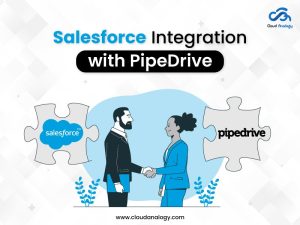Sharing is caring!
INTRODUCTION TO CLOUD COMPUTING AND FORCE.COM
Looking to hire Salesforce Developers and explore the best of Cloud Computing?
“Cloud computing” has dramatically changed how business applications are built and run. Deploying another application is presented as fast as opening your Internet program. Platform as a Service — or PaaS — is today an established model for running applications without the challenge of maintaining the hardware and software infrastructure at your company. An advantage of PaaS solutions is their ability to upgrade themselves to the latest without manual intervention.
PaaS services are deployed in the cloud and accessed by clients essentially via their web program. Software designers, web engineers, and organizations can make all profit by PaaS: Software designers can take advantage of a PaaS solution to assemble an application which they are planning to offer over the web or software to sell out of the box. Web designers can utilize individual PaaS situations at each stage of the procedure to create, test, and host their sites. Organizations can build up their internal software, mainly to develop unmistakable ring-fenced advancement and testing conditions. Platform as a service (PaaS) is a distributed computing model in which an outsider supplier conveys hardware and software instruments – usually those required for application improvement – to clients over the web. A PaaS supplier has the hardware and software all alone infrastructure.
PaaS liberates clients from having to install in-house hardware and software to create or run another application. The original aim of PaaS was to improve the code-composing process for designers, with the infrastructure and operations handled by the PaaS supplier. Initially, all PaaS platforms were in the public cloud. Over a period because many companies did not want to have everything, in the public cloud, private and hybrid PaaS platforms built.
Force.com Platform enables corporations to build and deploy apps in the cloud, faster than many on-premise application platforms, hybrid platforms, and many cloud platforms that are not as evolved.
PaaS gives a situation to engineers and companies to create, have and convey applications, saving designers from the complexities of the infrastructure side (setting up, arranging, and managing components, for example, servers and databases). PaaS can accelerate the process of application development by ensuring that developers and other stakeholders can concentrate on the application itself without having to address issues around managing runtime, middleware, operating framework, virtualization, servers, storage, and networking.
What makes Force.com PaaS?
Just like Salesforce.com is an out-of-the-box solution with their products around, Salesforce Sales Cloud and Salesforce Marketing Cloud. An organization could go out and buy the Salesforce Sales Cloud today and start logging leads, opportunities, running reports, etc. In contrast, by buying some Force.com licenses, you would not have an out-of-the-box solution, no access to leads, accounts, or opportunities. You would have to build Apps, Tabs, Custom Objects, Workflow Rules yourself all to design the kind of system that you want to use.
Force.com as PaaS
Force.com has some significant differences as compared to other PaaS providers as it underpins a programming interface and is specifically intended for creating multi-tenant cloud-based applications. It has a unique programming model based on the Java-like Apex programming language. It also has a native UI and UI programming language. Applications built on Force.com platform can be expansions of CRM capabilities gave by Salesforce CRM, or they can be work process-based business applications, for example, approval work processes. The platform also provides integration APIs to CRM integration or outsider services.
In Force.com a developer can merely declare data objects are utilizing visual configuration tools and compose trigger handlers in the Apex programming language. Support for multi-tenancy, including tenant data isolation and configuration, is given out of the case with no specific programming required. One of the practical, abnormal state aspects of this sort of platform.
However, the tradeoff is that the programming model is one of a kind and does not translate to traditional enterprise architecture. Additionally, with a specific end goal to help multi-tenancy, the platform has runtime cutoff points in place which limit the amount of data, some transactions, and transaction latency.
The Force.com platform offers other features, including security and integration with external APIs
Force.com accelerates development velocity for cloud-based applications that tap into the center Salesforce.com application and facilitate seamless deployment. Many ISVs are reluctant to adopt Force.com because of its being proprietary and does not have the maturity or market acceptance as compared to more mainstream development platforms, for example, Microsoft .NET or Java/J2EE. Also, as the Force.com does not offer extreme cloud portability some programmers are hesitant in leveraging this platform
Salesforce.com is proceeding with its PaaS push. For example, the company acquired Heroku—a Ruby-based PaaS that backings a global improvement group and pushes many social and versatile cloud applications. The company also presented database.com—a language-autonomous facilitated database apparently on the path to contend with Microsoft SQL Azure. How these forms strategically complement Force.com and will be accepted by the market has yet to be completely caught on.
A right PaaS platform drives innovation, enabling corporations to deploy applications faster. An exact PaaS application is open, lets IT collaboration helps in multi-cloud deployment.
Despite Force.com’s focus on productivity, the platform still needs to address factors like development support for a range of application from simple to the most complex, visual development of application logic and source control out of the box.
Want to hire Salesforce Developers? Choose Cloud Analogy, a leading Salesforce Silver Consulting Partner, now.












